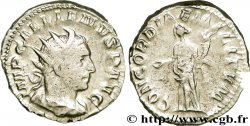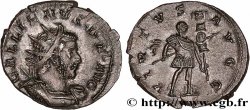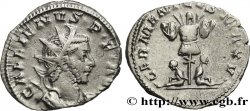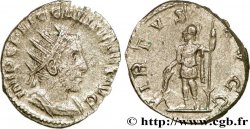brm_284857 - GALLIENUS Antoninien
Not available.
Item sold on our e-shop (2012)
Price : 115.00 €
Item sold on our e-shop (2012)
Price : 115.00 €
Type : Antoninien
Date: c. 255
Mint name / Town : Atelier secondaire d’Orient (Samosate)
Metal : billon
Millesimal fineness : 250 ‰
Diameter : 21 mm
Orientation dies : 12 h.
Weight : 3,04 g.
Rarity : R2
Coments on the condition:
Bel exemplaire sur un flan ovale, parfaitement centré. Joli portrait avec une fine usure et superbe revers bien venu à la frappe. Patine grise
Catalogue references :
Obverse
Obverse legend : IMP C P LIC GALLIENVS AVG.
Obverse description : Buste radié, drapé et cuirassé de Valérien Ier à droite, vu de trois quarts en arrière (A2).
Obverse translation : “Imperator Cæsar Publius Licinius Gallienus Augustus”, (L’empereur césar Publius Licinius Gallien auguste).
Reverse
Reverse legend : VOTA ORBIS.
Reverse description : Deux Victoires, debout face à face accrochant un bouclier inscrit SC sur un palmier.
Reverse translation : “Vota Orbis”, (Les voeux du monde).
Commentary
Rubans de type 3. Revers rare et recherché que nous proposons pour la première fois à la vente !.








 Report a mistake
Report a mistake Print the page
Print the page Share my selection
Share my selection Ask a question
Ask a question Consign / sell
Consign / sell
 Full data
Full data



